Everything you need to know about the Kearl Mine tailings silent leak and then sudden spill
Last Updated May 16, 2023
Imperial Oil has captured the attention of the public for all the wrong reasons when it surfaced that the company had a leaking tailings problem at their Kearl mine site in northeastern Alberta, roughly 75 kilometers upstream of Wood Buffalo National Park. Two significant events came to light this past February: first, a long-term leak and second, a sudden overflow and spill.

Everything you need to know about the Kearl Spill
First, there was a secretly leaking tailings pond
In May 2022, Imperial Oil workers discovered tailings fluid leaking from the company’s Kearl oil sands mine, both on site and off site. Imperial discovered pooled surface water in the area, which was found to be a mix of groundwater and fluids from tailings pond (Imperial EPO Update #3).
The leaking tailings pond (creatively called the “External Tailings Area” or “ETA”) lies right on the northeastern edge of the Kearl mine lease. Directly on the other side of the ETA is muskeg and forested public lands inhabited by various species of wildlife, a fish-bearing waterbody, and tributaries of the Firebag and Muskeg Rivers.
In fact, in August 2022, more discoloured water was discovered near a fish-bearing waterbody, called “Waterbody 3” (from Kearl August 2022 Monthly Industrial Wastewater and Industrial Runoff Report).
Although the leak persisted, the incident was never made public.
While the leak was reported to the Alberta Energy Regulator by Imperial Oil and two “non-compliances” were issued (but not posted), and the company met with the provincial regulator multiple times, the general public and nearby Indigenous communities were unaware of the uncontrolled leak.
Frequently Asked Questions On the Kearl Spill
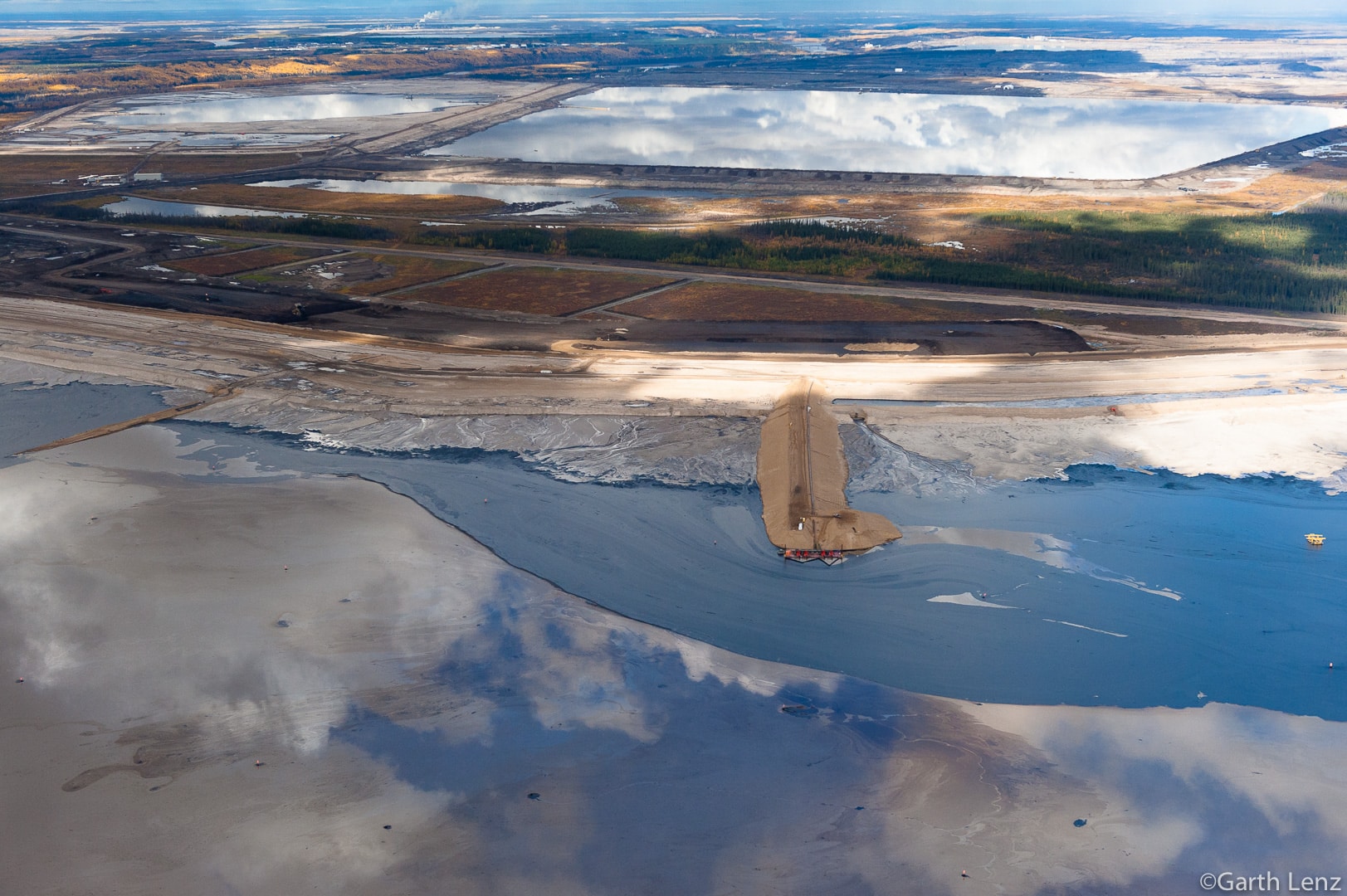
Then, there was a second sudden spill – and the initial leaky tailings pond was uncovered
Nine months after the prolonged leak was discovered there was a disastrous second spill of 5.3 million liters from the tailings area. This second spill was about twice the volume of an Olympic-size swimming pool.
While the Alberta Energy Regulator states the overflow occurred on February 4, 2023 and was immediately reported to the regulator, an Imperial report states the storage pond overflowed off lease on January 31, 2023, meaning it must have taken four days to detect the spill and it took nearly a week for the public to learn of the spill.


Imperial states that the area of impact for this spill is five hectares, just outside their Kearl lease boundary. If you were to imagine this tailings spill, it would be enough tailings fluid to cover two city blocks up to a depth of 10 centimeters. Except, instead of city blocks, this spill leaked into rich boreal wetlands and next to nearby tributaries where water drains to drinking water sources.
This second incident differs from the first incident because it was an acute and punctuated event. It is similar in that the second spill also affected areas on and off the lease site, including muskeg and forested areas on public lands. They are both considered releases of industrial wastewaters (or “tailings”).
The company has not stated whether the longer chronic leak is related to the acute spill, or if it contributed to the overflow. But we note that the portion of the tailings area that overflowed and spilled (aptly named “Drainage Pond 4”) is designed to capture additional seepage from the ETA, which had been leaking for at least nine months prior.
Spilling the beans on the leaking tailings: an Environmental Protection Order
Indigenous communities, the public, provincial governments, federal government, and territorial governments only learned of the initial leak and the subsequent spill through the provincial regulator’s Environmental Protection Order, issued on February 6, 2023. The Environmental Protection Order (EPO) to Imperial Oil called on the company to immediately contain and remediate the spill and leak at the Kearl site and was published publicly by the regulator.
The EPO was finally triggered because the second spill was determined to have caused, or may cause, an adverse effect and remedial work was required to mitigate adverse effects – particularly before the spring thaw. It is unclear why the first leak did not also trigger an Environmental Protection Order.
It is only because of the EPO that the initial leak was learned about at all. The EPO came out nine months after the initial leak was discovered and continued to leak, meaning anyone could have used the contaminated area without being aware of the risks they were exposing themselves to.
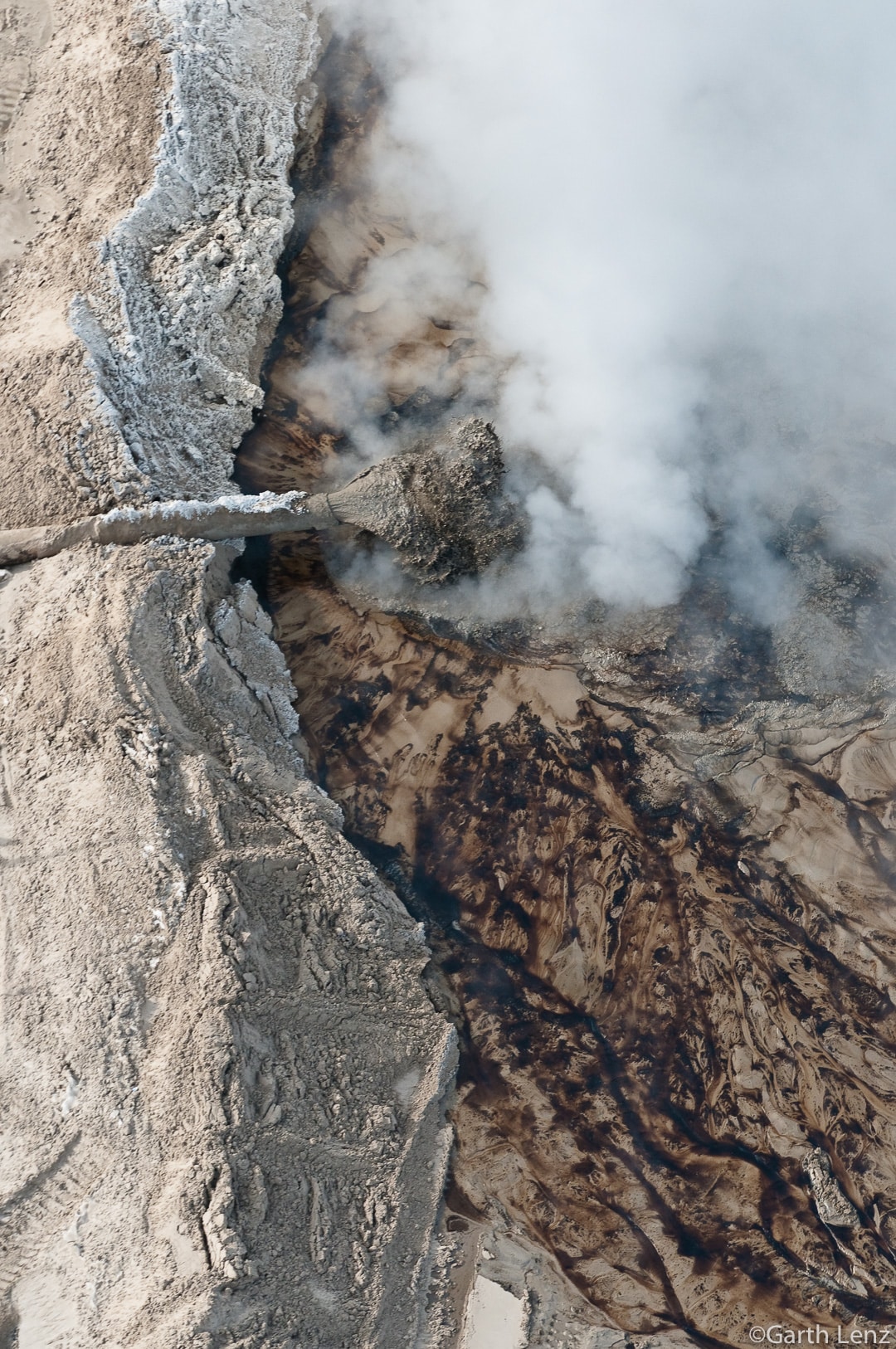
Monitoring results, so far:
Results of the monitoring around Waterbody 3 are available here:
https://www.aer.ca/protecting-what-matters/holding-industry-accountable/investigations/ongoing-investigations/imperial-oil-kearl-oil-sands
Results from the monitoring stations downstream of Firebag tributary available here:
https://www.alberta.ca/fort-chipewyan-working-group.aspx
Groundwater sampling results from before May 2022 and/or after May 2022 are still not posted online.
The datasets above do not include groundwater testing from sites off site, outside of Waterbody 3, which means the full extent of the underground leak is still not clear.
Everything you need to know about the Kearl Spill
Environmental Impacts of the Leak
Water quality impacts are of high concern. The impacted area includes muskeg and waterbodies, as well as tributaries that flow into the Firebag River, which feeds into the Athabasca River, a drinking water source for thousands of downstream community members.
Imperial Oil stated on March 6, 2023, that “based on our monitoring, released fluids did not enter any waterways and there have been no impacts to local drinking water sources. There is no indication of impact to wildlife.” However, the industrial wastewater that was found in the impacted area exceeded guidelines for chemicals such as dissolved iron, total arsenic, F2 hydrocarbons, sulphate, and total sulphide.
The statement is also contradictory to findings by the Alberta Energy Regulator that test results are indicators of “industrial wastewater within Waterbody 3 (WB3), a fish-bearing waterbody on the northeastern edge of Imperial’s Kearl lease.” After further testing of Waterbody 3, F2 hydrocarbons were measured at levels that exceeds the Surface Water Quality Guidelines for the Protection of Freshwater Aquatic Life (AEP PAL).
The AER notes that the toxicant loads remain within levels that are safe to the public, though it is not clear which contaminants are being tested for.
Imperial provided action plans to prevent further release, however, timelines for off-site actions would not allow for the work to be completed before the spring freshet. This is particularly concerning, as the spring melt will help further the spread of contaminants and concentrate the seepage in areas like nearby waterbodies.
Safe drinking water was of immediate concern and the community of Fort Chipewyan has diverted its water source from the Athabasca River to a reservoir. Drinking water has since been diverted back.
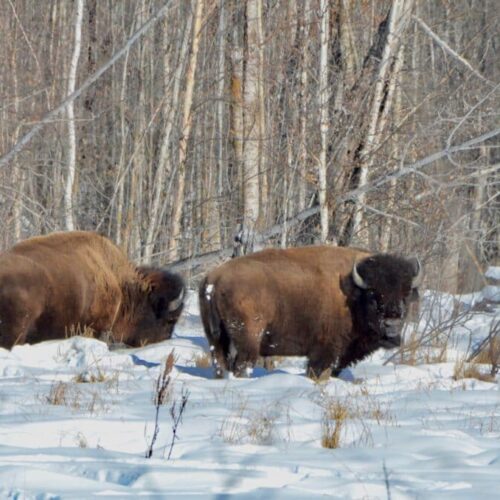
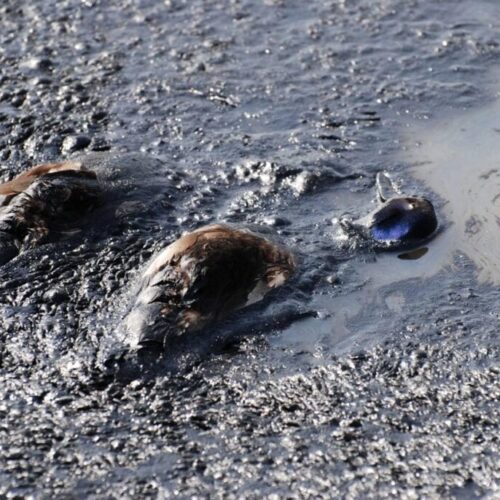
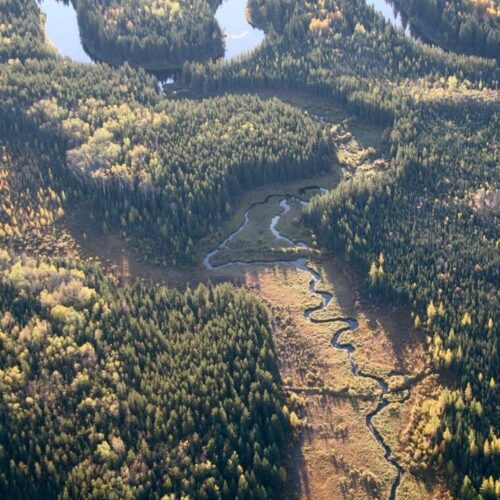
Indigenous leaders championing the work
It is thanks to the courageous work done by impacted First Nation communities that has shed light on this systemic environmental issue. Community members are outraged and unsettled by the nine-month coverup that released tailings near land where food is harvested by many.
Athabasca Chipewyan First Nation (ACFN) is demanding action and accountability from the Alberta Energy Regulator after being kept in the dark for nearly year about the seepage.
“This does not appear to be a simple accident, but a systemic failure of Imperials’ tailing ponds,” said Chief Adam of ACFN, “The failure of one pond might be explained as a malfunction, but the failures of four ponds suggests much bigger problems at the Kearl site. And these are just the ones we know of. ACFN is concerned that Imperial may not have adequate procedures or infrastructure to contain their tailings. This incident must be fully investigated so we can get to the bottom of this.”
Similarly, Mikisew Cree First Nation is calling for an “immediate and independent review into the Alberta Energy Regulator’s oversight of oil sands tailings”.
This is happening at a time when options are being explored to release oilsands water into the Athabasca River as part of the remedial efforts of tailing ponds, putting communities under immense stress with the uncertainty surrounding their health and safety.
How and why did the Kearl tailings pond fail?
The first thing to wrap our heads around is this: all oil sands tailings ponds leak. All of them. They are, in fact, designed to leak. The industry’s solution to this problem is a system of wells that surround tailings ponds and pump the seeping wasterwaters back into the tailings reservoir. This engineered feature is called a “seepage interception systems” (or SIS). The system is composed of “monitoring wells” (which measure seepage rates) and “interceptor wells” (which recapture fluids and pump them back when turned on).
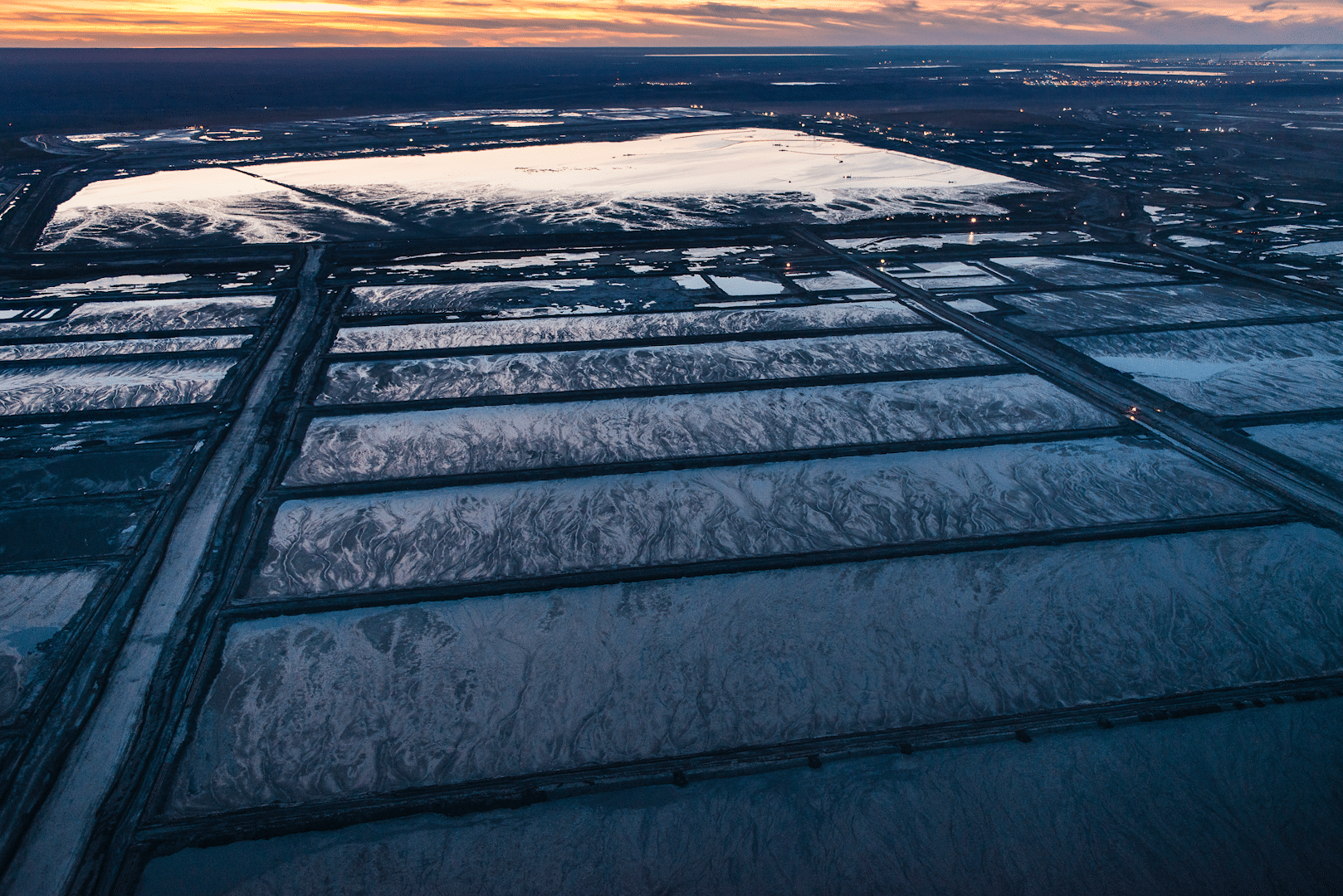
But, these systems are far from perfect.
We know the initial leak was determined by Imperial Oil as process affected water (another industry term for “tailings”) mixed with impacted shallow groundwater. This indicates that the seepage was escaping at a depth in the ground that was not able to be recaptured by Kearl’s seepage interception system.
The ongoing leak also indicates that the seepage interception system, which is supposed to monitor seepage rates, was unable to detect increasing seepage rates – or, far worse, the monitoring wells did detect increasing seepage, and the company or the regulator failed to act.
The second incident, the overflow, was caused “by a combination of equipment problems and process failure,” as stated by the company. They state the measurement equipment was not providing accurate pond level information, so the high pond level depth failed to trigger the automatic pump to lower pond levels. They state it was difficult to visually recognize the drainage pond was filling up because of visibility issues and the winter.
It is not clear how rigorously or systematically these tailings ponds are surveyed on-foot or equipment is checked. It is unclear the span of time the drainage pond was filling up before it ultimately overflowed.
As of yet, there is no confirmation that the initial leak has been contained.
It is also important to take a step back – what were the decisions that led to the tailings leak and was this incident preventable? The company and the regulator were well aware that the proposed area for External Tailings Area (ETA) was not an ideal spot for a tailings pond. During the regulatory review process, it was found that the foundation was permeable and that “this seepage will likely impact surface water bodies to the north, specifically the Firebag River and its three tributaries, and that groundwater and surface water quality could degrade,” (Joint Review Panel report from the federal impact assessment (2007), p. 37).
Imperial’s Clean Up Efforts
In the Environmental Protection Order (EPO), Imperial Oil was ordered to produce and implement a Source Control and Containment Plan, Communications Plan, Sampling and Monitoring Plan, Fish and Wildlife Mitigation Plan and finally, a Remediation Plan.
You’ve probably wondered what a containment and remediation plan (basically, a “clean up” plan) would look like for such a spill…
Well, there are two kinds of clean-up ongoing.
The first clean-up is for the below ground leak, which was first discovered in May 2022 because the underground leak bubbled up to the surface creating pools of bright orange fluid.
Imperial Oil took several months to test the pools of fluid and determine they were, indeed, from their industrial tailings pond. This means they conducted a geochemistry study to determine source and pathway of the seepage, initiated in June 2022. In September, Imperial confirmed the source of the seepage was “process affected waters” (which means tailings). In November, Imperial confirmed the pathway of the seepage was from the External Tailings Area and was coming to the surface on and off site.
It was not until December 2022 that Imperial Oil began drilling additional seepage interception wells – seven months after the seepage was discovered on the surface.
The seepage interception wells are supposed to help suck up underground seepage and pump it back to the ponds. Up until December, only shallow groundwater monitoring wells had been installed.
Once the uncontrolled seepage hit headlines, Imperial Oil acted more swiftly and “drilled an additional monitoring and pumping wells, as well as additional drainage structures in the area to collect water to be pumped back to collection areas.” The “drainage structures” are deep trenches dug around Drainage Pond 4.
Everything you need to know about the Kearl Spill
Who is responsible for the spill?
Who is responsible for telling the public and impacted communities about the spill?
Most parties have been quick to shift the blame to the company, Imperial Oil. The Alberta Energy Regulator (AER) swiftly stated “It is the licensee’s responsibility to report fluid releases to affected or potentially affected parties as soon as they become aware of the release,” after the Environmental Protection Order was issued.
The Alberta Premier, Hon. Danielle Smith, has also stated it was the responsibility of the company to disclose the leak to Indigenous communities, while opposition leader, Rachel Notley, says the Government of Alberta had an obligation to notify stakeholders of the leak.
Who is responsible for ensuring oil sands tailings do not impact the environment?
With respect to responsibility for the environmental harms of the tailings leak, the Kearl mine underwent an approval process through the Alberta Energy Regulator. The mine project was approved and provided conditions and requirements for operation under several provincial Acts.
Legislation that guides management intent in the oil sands includes the Environmental Protection and Enhancement Act (EPEA), the Public Lands Act and the Water Act. While these pieces of legislation are held by the Government of Alberta, certain responsibilities under these acts have been given to the Alberta Energy Regulator. This is why, for example, the Alberta Energy Regulator has responsibility for issuing, amending, maintaining, and inspecting all public land use authorizations and dispositions for energy industry activities, including gas, oil, coal, and oil sands.
In fact, for all three pieces of legislation, the Alberta Energy Regulator is almost entirely responsible for its application to all things related to the energy activities – this means all oil, gas, oil sands, and coal activity in the province. Before 2013, when the Alberta Energy Regulator was created, provincial legislation on public lands, water, and the environment that related to energy resource extraction was largely administered by the Alberta Environment and Parks.
While the Alberta Energy Regulator has issued two notices of “non-compliance” under Imperial’s EPEA approval for the Kearl mine – no charges or prosecution have been filed under EPEA.
Operating on Alberta’s public lands is a privilege, not a right. It is the responsibility of the operator to carry out due diligence in ensuring activities do not have the environment and local communities; it is the responsibility of the regulator to ensure operators are abiding by these rules and take enforcement action if not; and it is the responsibility of our governments to ensure legislation protects the environment and people and is being meaningfully implemented.
Canada has jurisdiction through the Fisheries Act, which provides the federal government some power over activities that directly impact fish or fish habitat. The Government of Canada has issued a Fisheries Act direction, as investigators have found the leak was harmful to wildlife and fish and ordered the company to take immediate action. Indigenous and environmental organizations are calling for a full prosecution of the company under the Fisheries Act.
As of yet, no Fisheries Act charges have been laid against Imperial Oil, but Canada has opened an investigation into the two tailings releases under the Fisheries Act. The investigation will assess whether or not hazardous materials entered into water used by fish, or if the hazardous materials could enter such waters. This escalation of the file could lead to a potential prosecution. Canada has already confirmed presence of hydrocarbons and naphthenic acids in a fish-bearing lake on site.
Other converging oil sands issues
As public attention on the oil sands heightens, due to the Kearl spill and leak, more and more concerning incidents of oil sands impacts come forward. Here are a few examples of current oil sands issues that highlight significant concerns about their impacts:
- On April 16, the oil sands company, Suncor, reported that its Fort Hills project had discharged water into a tributary (Fort Creek) that flows into the Athabasca River that exceeded guidelines for “total suspended solids”.
- On April 21, 2023, the oil sands operator, Suncor, reported 32 dead waterfowl found in its tailings pond 28 km north of Fort Mcmurray during an oilsands bird-contact monitoring survey. At the time of the discovery, all bird deterrent systems were active – including cannons, radars, and effigies. Since the initial sweep, there is now a count of 43 dead birds, as well as two muskrats, one bat and one vole. An investigation has been initiated.
- On April 24, new federal research suggests greenhouse gas emissions from the Alberta oilsands may be significantly underestimated, adding to a growing pile of studies that say our understanding of what is going into the atmosphere is incomplete. In the report, researchers used new ways of measuring oilsands emissions that resulted in figures at least 65 per cent higher than those reported by industry.

Important to Know
Resources
- Alberta Energy Regulator page for the Kearl incident (regularly updated): https://www.aer.ca/providing-information/news-and-resources/news-and-announcements/announcements/announcement-february-07-2023
- Imperial EPO Update #3: https://www.imperialoil.ca/-/media/imperial/files/operations/kearl/kearl-epo-update-3-mar-1-2023.pdf
- Environmental Protection Order: https://www1.aer.ca/compliancedashboard/enforcement/202302-02_Imperial%20Oil%20Resources%20Limited_Kearl_Order.pdf
- Kearl Monthly Industrial Wastewater Reports are accessed here: https://www1.aer.ca/PubDocs/#/application-query
Take Action
Share your support for National Urban Parks
Email your MLA to let them know you support National Urban Parks and would like to see Alberta be a part of a national network of urban parks.
STAY INFORMED
Protect the Wilderness
To receive news and updates from CPAWS Northern Alberta, including opportunities to get involved, join our mailing list below.
